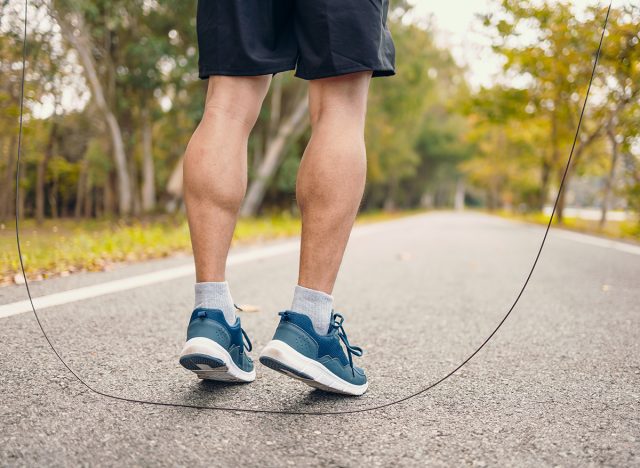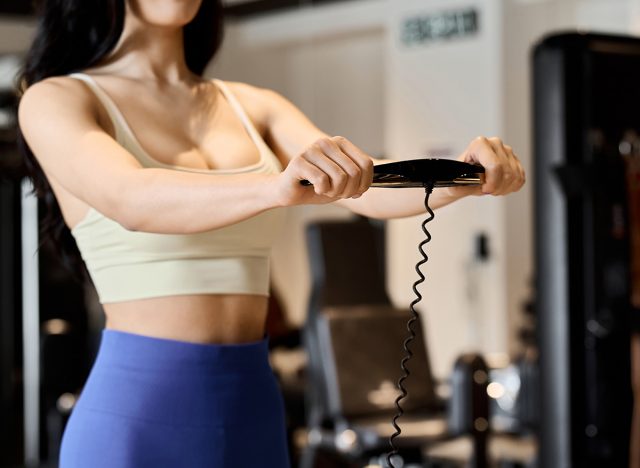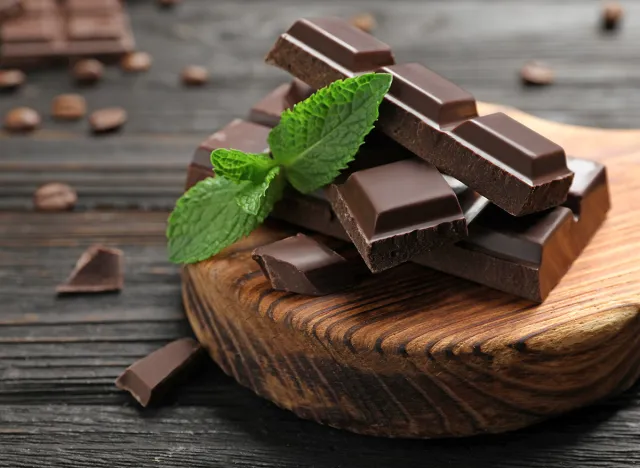I Lost 10 Pounds in 50 Days with These 5 Changes
Cam, one half of the brother influencer duo who make up Goal Guys, a YouTube account providing "different goals in fitness and productivity," regularly shares video content about diet and fitness. In one recent viral video, he reveals the hacks that helped him drop 10 pounds in 50 days. "I genuinely do not understand how I've put on so much weight. I eat pretty healthy. I exercise two to three times a week, so what am I doing wrong?" he says in the video, setting a goal of losing 10 pounds of body fat in 50 days.
Tracking Calories
Cam starts with a goal of "paying careful attention" to nutrition. "The first thing I'm aiming for a daily calorie goal of just 1900 calories, and as crazy as it is to say I actually think my current diet is pretty healthy, so I'm also going to track every food I eat for the next 50 days to figure out where I've been going wrong," he says. The Diet Diva, Tara Collingwood, MS, RDN, CSSD, LD/N, ACSM-CPT, a Board Certified Sports Dietitian, agrees that counting calories is essential for weight loss, because even if you are eating "healthy" foods, you can still be eating too many calories. "Tracking calories and having a reduced calorie goal is a great way to understand how much is coming in and try to reduce intake to produce results," she says.
Related: I'm a Nutritionist and Here are 10 Weight Loss Foods I Buy Every Week
Upping His Workouts

He will also be "increasing the intensity" of his workouts. "For exercise, I'm going to be doing five workouts per week, alternating between jump rope and weightlifting and to up the intensity." He adds that his "secret weapon" is a Bluetooth connected jump rope that tracks "every single jump" with a goal of 2,000 jumps. Weight training "to build and maintain muscle and burn calories" paired with high intensity cardio is a "great balance," Collingwood agrees. "Love that the jump rope tracks his progress along the way so he can have a number to shoot for."
Body Scans

Cam also does post-workout body scans. "This is going to show me how much of what I lose during this challenge is actually body fat," he says, revealing that his first one was 36 percent body fat. "You don't need to scan your body or test your body fat after every workout," says Collingwood. 'It likely won't be very accurate right after a workout because of hydration levels." She recommends typically every 3 to 6 months to check the muscle and fat ratio, "but at a maximum I would wait 4 weeks in between measurements." She adds that there is always going to be a bit of error in the measurement of the body fat due to hydration levels, etc. "It also takes time to build muscle so waiting a month or so allows you to allow your body to put on some of the muscle mass."
Morning Workouts

Cam also decided to exercise earlier rather than later. "I'm going to try to tackle my workouts first thing each morning. Hopefully this will help cut out any decision-making and help me to stay consistent throughout the 50 days and to make sure I'm pushing myself," he says. "The best time of the day to work out is when you'll do it," says Collingwood. "Cam has found that morning is best for him and that is what works best for me as well, but if you're not a morning person or have obligations in the morning with family or work, then maybe lunchtime or after work is a better time for you."
Related: Autumn Calabrese Shows Off Washboard Abs and Shares Tips On How to Stay "Fit Over 40"
Cutting Out Unhealthy Snacks

After tracking his calories, he realized that snacking was one of the culprits behind his weight gain. One day he decided to eat some snacks – three squares of dark chocolate, half a bag of popcorn in one glass of wine – 660 calories. He then tried to work it off via exercise, realizing it was a lot harder than he thought it would be. "I was severely underestimating how many calories were in those snacks because I was having those four times a week," he says, pointing out "that's an extra 2,400 calories per week. That's more than I'm going to eat today. So no wonder I was putting on weight even though I was exercising." Collingwood agrees that snacking can be sneakily unhealthy. "I am a fan of snacking, but make sure those snacks have a purpose and actually provide some satisfaction and satiety instead of just empty calories. I recommend protein snacks or foods that are high fiber. Both protein and fiber provide satiety and can last longer between meals," she adds.
💪🔥Body Booster: Even if you think you are eating healthy, there might be hidden calories lurking in your snacks. Tracking your calories and meals is an easy way to really look at your diet as a whole.





